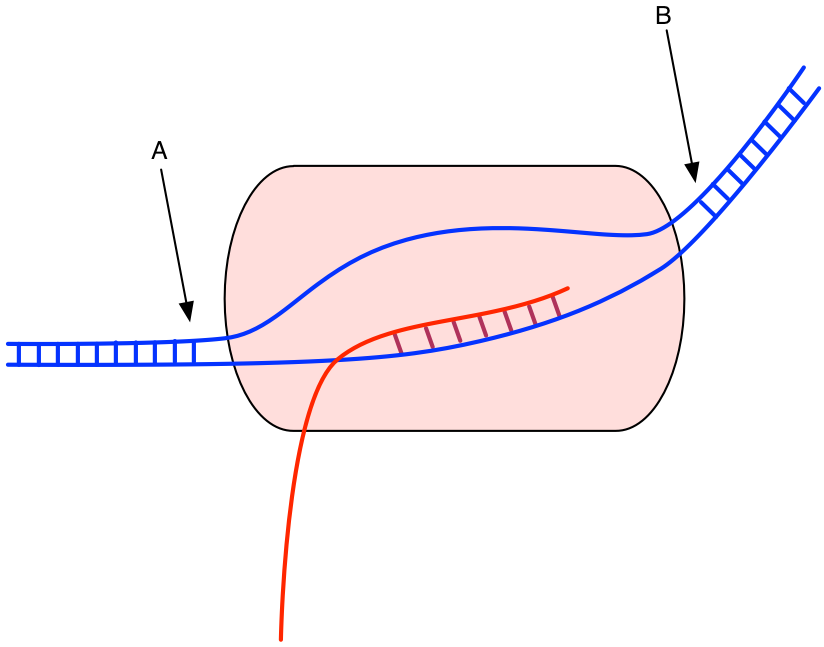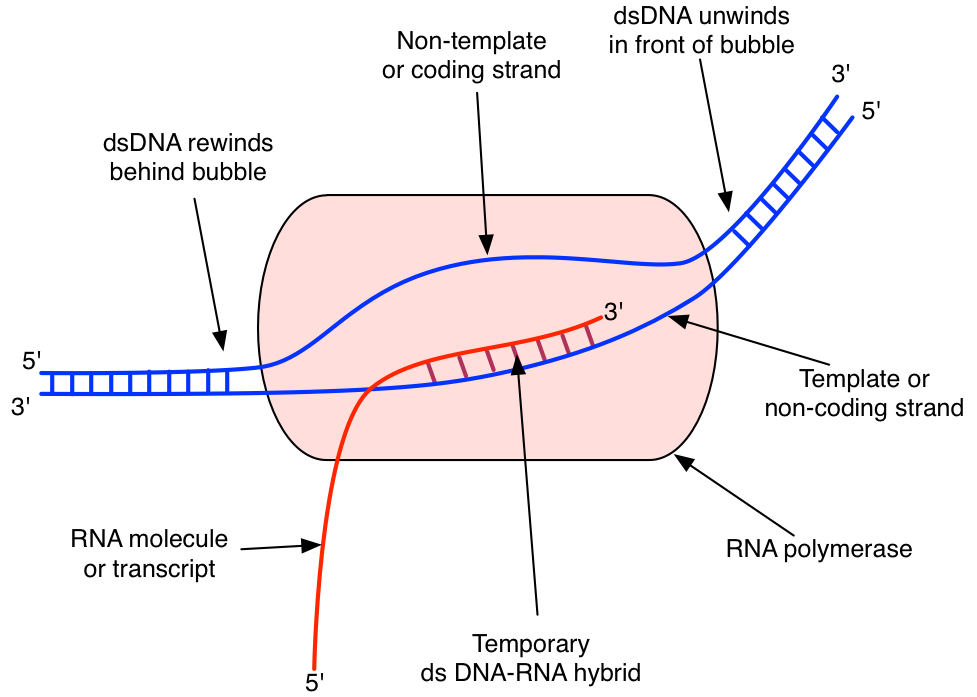- RNA molecules
- RNA polymerase and the process of transcription
- Principles of translation and the genetic code
- Translation in the ribosome
1. Before you begin this topic, you should know the structure and properties of DNA and RNA molecules. Review the material on transcription, and particularly Figure 8.7 in your textbook.
2. The first thing you should know is what happens during transcription. Review your textbook and your notes and write down the definition of transcription. Underline the four key ideas of transcription and review why they are important. If you cannot remember the four key ideas of transcription, take a look at your notes from class.
3. As DNA is being transcribed by the polymerase, a transcription bubble forms. Study the transcription bubble in your notes and in the textbook. It is important to understand why this structure is in the shape of a bubble, what is happening in front of the bubble, what is happening behind the bubble, and what is happening within the bubble. On a piece of paper, copy the following diagram and label everything that you think can be labeled on it. Arrows A and B refer to what is happening in front and behind the bubble. Make sure you label the 5' and 3' ends of DNA and RNA molecules. When you are done, check you diagram against the one shown when you move your mouse over the word "answer" below. If you missed some of the labels, or mislabeled some of the parts, try it again.

ANSWER

4. Now that you have learned how transcription work, you should know what type of activities does RNA polymerase have? Here are some questions to think about (answers can be found in textbook and lecture notes):
- Can RNA polymerase unwind dsDNA? Why? What is the name of the activity that unwinds ds DNA?
- Does RNA polymerase need to have a dsDNA rewinding activity?
- Does RNA polymerase have 5' and or 3' exonuclease activities (like DNA polymerases)?
5. The last thing you need to know about transcription is the concept of the promoter. Study your textbook and notes and write down the definition of promoter on a piece of paper. Bacterial promoters are relatively well studied and have been found to contain consensus sequences in specific positions relative to the first nucleotide that will be copied during transcription. Answer the following questions regarding promoters:
- What does it mean when we say a sequence is upstream or downstream from the first transcription nucleotide in DNA?
- What are the two commonly found consensus sequences that we find in bacterial promoters?
- Where are the consensus sequences found relative to the first transcribed nucleotide (direction and number)?
6. Using your notes as a guide, on a piece of paper, draw a general diagram of a bacterial promoter. Label the consensus sequences and the start of transcription on your diagram. Draw an arrow that indicates the direction of transcription. Label the parts of the DNA molecule, which are upstream and downstream of the start of transcription.
7. Depending on their sequences, promoters can vary in strength. On a piece of o paper draw a generalized diagram of a bacterial operon. Make sure that you copy the actual consensus nucleotide sequences of the conserved regions. Now draw a few examples of strong operons, intermediate operons, and weak operons. Don't search the internet for actual operon sequences, make up your own, using as guide the concept of "what makes an operon strength vary" as explained in your lecture notes.
8. If you feel that you have mastered the concepts on this page, you can move to the next topic of this sub-unit, which deals with the principles of translation and the genetic code.